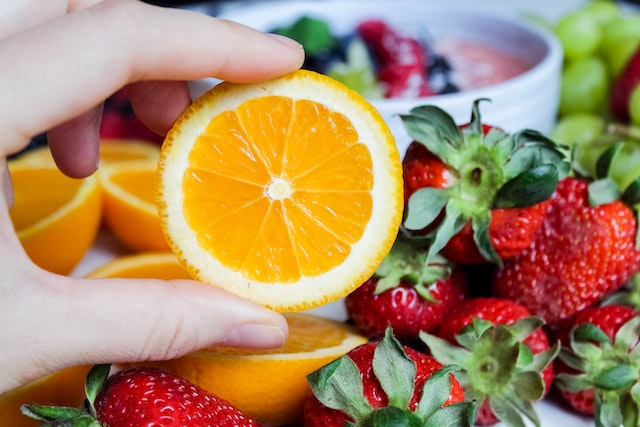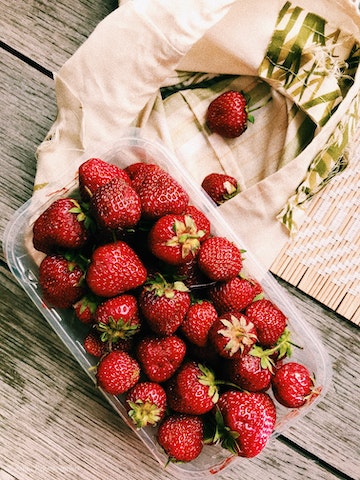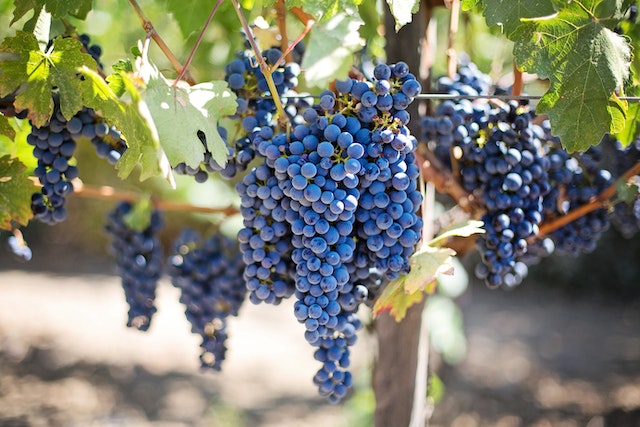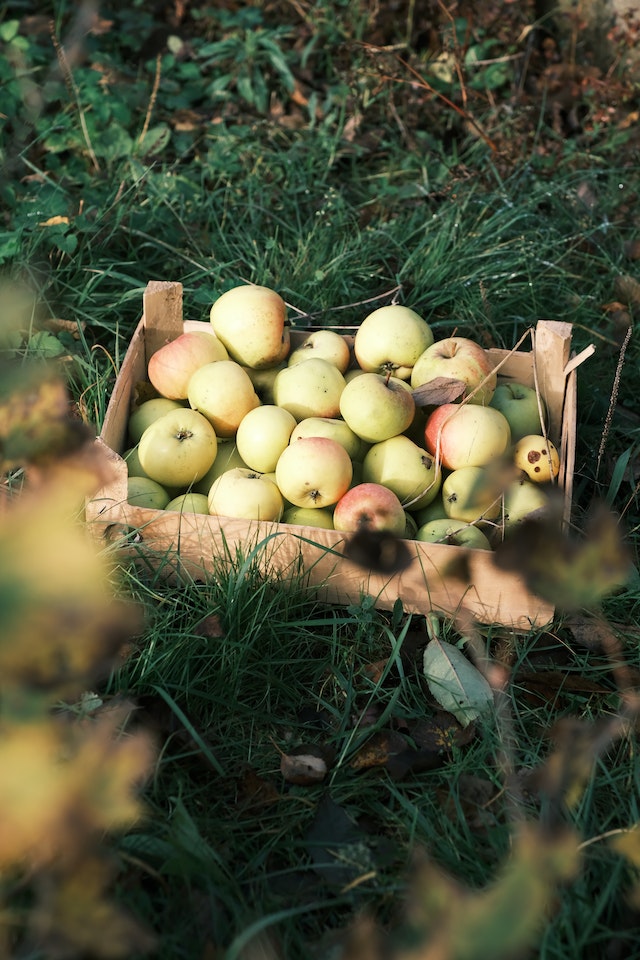
As the seasons change, so do the fresh produce options available to us. Fruits are an essential part of our diets, providing us with not only a delicious snack but also a plethora of essential nutrients. Consuming fruits that are in season not only ensures that we are getting the best flavor but also the most nutritional benefits. From juicy berries in the summer to crisp apples in the fall, each season offers an array of unique and delicious fruits to indulge in.
Benefits of Eating Seasonal Fruits
Eating seasonal fruits has many benefits for our health and the environment. Here are some of the key benefits:
Nutritional Benefits
When you eat fruits in season, you are consuming produce that is fully ripened and at its peak nutritional value. Fruits that are out of season may be harvested prematurely and artificially ripened, which can result in a lower nutrient content. For example, cherries that are picked in-season have been shown to have higher vitamin C and antioxidant levels than cherries harvested out of season.
Better Flavor
Seasonal fruits taste better because they are grown and harvested at the right time, so they ripen naturally and taste as they should. When fruits are harvested prematurely, they do not reach their full flavor potential. Contrastingly, when fruits are left on the vine to ripen fully before they are harvested, they become sweeter, more flavorful, and juicier. Eating seasonal fruits is a great way to enjoy the natural taste of fresh produce.
More Affordable
When fruits are in season and readily available, they are usually more affordable compared to out-of-season produce. For example, blueberries might be quite expensive in the winter as they are out of season, but during the summer months when they are readily available, you will find much better prices at the grocery store or farmer’s market.
Environmentally-Friendly
When you eat seasonal fruits, you are also making an environmentally-friendly decision. Fruits that are out of season often need to be transported long distances to reach your local grocery store. This transportation not only adds to the price of produce but also increases carbon emissions. When you consume seasonal fruits, you are supporting your local farmers, reducing transportation emissions, and decreasing your carbon footprint.
More Variety
Eating fruits that are in season ensures that you’ll get to try new and different types of produce every season. For example, in the summer, you might enjoy watermelon, cherries, and apricots, while in the fall, you might indulge in apples, pears, and persimmons. By eating seasonally, you’ll expand your palate and reap the benefits of a varied and nutrient-rich diet.
Spring Fruits
Spring is a magical time of year when the weather starts to warm up, flowers begin to bloom, and fresh produce makes its way into our kitchens. Spring is the perfect season to indulge in an array of delicious and healthy fruits that are at their prime.
In this section, we’ll examine some of the best spring fruits, their health benefits, and how to enjoy them:

Strawberries
One of the first fruits to come into season in the spring is strawberries. Strawberries are not only vibrant and delicious but are also highly nutritious. These little red berries are packed with vitamins and minerals such as vitamin C, manganese, and folate. They are also rich in antioxidants that help to fight inflammation and protect against chronic diseases. Strawberries are versatile and can be enjoyed in a variety of ways, from adding them to smoothies, topping them on yogurt, or baking them into desserts.
Apricots
Apricots are another delightful fruit that arrives in the early spring. They have a unique sweet and tart flavor and are a great source of vitamins A and C, both of which are essential for healthy skin, eyes, and immune system function. Apricots are also rich in fiber, which helps to promote healthy digestion. These fruits can be eaten fresh, dried, or cooked in savory dishes like tagines and stews.
Rhubarb
While it may be technically categorized as a vegetable, rhubarb is often used in sweet recipes like pies and crisps. Rhubarb is a great source of vitamin K, which is necessary for bone health and blood clotting. It is also rich in antioxidants and has anti-inflammatory properties. Rhubarb pairs well with strawberries and can also be used in savory dishes like chutneys and sauces.
Pineapple
Although pineapple is available year-round, it is in its prime during the spring season. Pineapple is a storehouse of nutrients such as vitamin C, manganese, and bromelain, an enzyme that aids in digestion and acts as an anti-inflammatory agent. Pineapple can be enjoyed fresh, grilled, or added to smoothies and fruit salads.
Summer Fruits
Summer is synonymous with long days, warm weather, and an abundance of fresh produce. The summer season brings with it a wide variety of delicious and healthy fruits that are at their peak. Eating in-season fruits is a great way to indulge in the best flavors of the season and reap their nutritional benefits. In this section, we’ll explore some of the best summer fruits, their health benefits, and how to enjoy them.
Berries
Summer is the peak season for berries, including strawberries, blueberries, raspberries, and blackberries. Berries are loaded with vitamins, antioxidants, and fiber, making them a perfect snack or addition to various dishes. They are low in calories and high in flavor, making them a great alternative to sugary snacks. Berries can be enjoyed fresh, frozen, or used in a variety of recipes, including smoothies, salads, and desserts.
Peaches and Nectarines
Peaches and nectarines are delicious summer fruits that are rich in vitamins and minerals like vitamin C, potassium, and beta-carotene. They are low in calories and high in fiber, making them great for weight management. Peaches are best consumed when they are ripe and juicy, and can be eaten fresh, grilled, or used in salads, jams, and pies.
Watermelon
Watermelon is a refreshing and hydrating summer fruit that is perfect for hot and humid days. It is one of the best sources of lycopene, a powerful antioxidant that helps protect against cancer and heart diseases. Watermelon is also rich in vitamins A and C, potassium, and magnesium. It can be eaten as a juicy snack, used in fruit salads, or even grilled to enhance its flavor.
Mangoes
Mangoes are tropical summer fruits that are rich in vitamins A and C, potassium, and fiber. They are low in calories and high in antioxidants, making them great for maintaining healthy skin and reducing the risk of chronic diseases. Mangoes can be enjoyed fresh, frozen, or used in a variety of recipes, including smoothies, chutneys, and desserts.

Tomatoes
Although technically classified as a fruit, tomatoes are often used as a vegetable and are at their best during the summer months. Tomatoes are rich in lycopene, vitamins A and C, and potassium. They are low in calories and high in fiber, making them a great addition to salads, sandwiches, and sauces.
Fall Fruits
The fall season is a time of harvest, when fruits and vegetables are at their peak. It is the perfect time to indulge in seasonal fruits that not only taste delicious but also offer a plethora of health benefits. In this section, we’ll explore some of the best fall fruits, their health benefits, and how to enjoy them.
Apples
Apples are one of the quintessential fruits of fall and for good reason. This fruit is packed with fiber, vitamins, and minerals that benefit everything from your digestive system to your immune system. Apples are also low in calories and high in antioxidants, making them an excellent snack for weight management.
There are thousands of different varieties of apples, each with a unique flavor and texture. From tart Granny Smith to sweet Honeycrisp, there’s an apple out there for everyone. Apples can be eaten raw, baked into pies, or even used to make homemade applesauce.
Pears
Pears are another fall fruit that is at its peak during this season. Like apples, pears are an excellent source of fiber and vitamins. They are also a good source of potassium and vitamin C, which help to reduce inflammation and support heart health.
Pears have a sweet, delicate flavor and can be eaten fresh or baked into desserts. They also pair well with savory ingredients like cheese and nuts, making them a versatile ingredient in many dishes.
Pomegranates
Pomegranates are superfoods that are high in antioxidants and polyphenols, which help to reduce inflammation and protect against chronic diseases. Studies have shown that pomegranate consumption can help lower blood pressure and improve heart health.
While pomegranates can be notoriously difficult to eat, the effort is worth it for their juicy, sweet seeds. Pomegranate seeds can be added to salads, used as a topping for oatmeal or yogurt, or even juiced for a refreshing drink.
Grapes
Grapes are a delicious and healthy fall fruit that are loaded with vitamins and antioxidants. They are also rich in phytonutrients like resveratrol, which help to reduce inflammation and support heart health.

Grapes can be eaten on their own as a snack or used in a variety of recipes, including salads, desserts, and even roasted with vegetables for a savory twist.
Cranberries
Cranberries are a staple of fall cuisine, particularly during the Thanksgiving season. This fruit is low in calories and high in vitamin C, fiber, and antioxidants. Studies have shown that cranberries may also help to prevent urinary tract infections.
Cranberries are often used in sauces and relishes to complement savory dishes like turkey. They can also be dried and used as a snack or added to baked goods like muffins and scones.
Winter Fruits
Winter is the time of year when most of us hunker down inside, ward off the cold, and wait for spring to arrive. But just because the weather is cold and dreary, it doesn’t mean that our diets have to be too. Winter brings with it an array of delicious and healthy fruits that are at their peak. Eating in-season fruits is a great way to indulge in the best flavors of the season and reap their nutritional benefits. Let’s explore some of the best winter fruits and their health benefits.
Citrus Fruits
Citrus fruits like oranges, lemons, limes, and grapefruits are a great source of vitamin C, which is an essential nutrient for immune function and skin health. These fruits are also rich in antioxidants, which help to protect against cell damage caused by free radicals. Citrus fruits are not only high in nutrients but also low in calories, making them a perfect healthy snack. Citrus fruits can be eaten fresh, juiced, or used in salads or desserts.
Kiwi
Kiwi is a lesser-known winter fruit that is packed with nutrients. This fruit is loaded with vitamin C, vitamin K, and fiber, making it an excellent choice for maintaining optimal health during the winter months. Kiwi is also high in antioxidants and has anti-inflammatory properties. This superfruit can be eaten fresh, used in smoothies, or added to salads for a sweet and tangy twist.
Pears
Pears are a delicious and versatile winter fruit that is in its prime during this season. Pears are a good source of fiber, vitamin C, and potassium, making them great for digestive health and supporting immune function. Pears have a sweet, delicate flavor and can be eaten fresh, baked into pies and tarts, or added to salads for a sweet crunch.
Pomegranate
Pomegranates are a winter fruit that is packed with antioxidants and anti-inflammatory properties. This superfood has been shown to improve heart health, reduce inflammation, and lower blood pressure.

Pomegranates are also a good source of fiber, vitamin C, and vitamin K. The best way to enjoy pomegranates is by eating the juicy seeds, but they can also be used in salads, desserts, and sauces.
Persimmons
Persimmons are a unique winter fruit that is worth seeking out. This fruit is a good source of vitamin A, vitamin C, and fiber, which helps support healthy skin and digestion. Persimmons have a sweet, delicate flavor and can be eaten fresh, used in baked goods, or added to salads for a unique flavor.
Cranberries
Cranberries are a classic winter berry that is often used in holiday dishes like cranberry sauce. These berries are a good source of vitamin C, fiber, and antioxidants, which help support immune function and reduce inflammation. Cranberries can be eaten fresh, dried, or used in a variety of dishes like salads, sauces, and desserts.
Tips for Selecting and Storing Seasonal Fruits
Eating in-season fruits is a fantastic way to embrace the natural flavors of the season and reap their full nutritional benefits. Whether you’re looking to add some variety to your diet or want to enjoy the freshest fruits available, here are some tips for selecting and storing seasonal fruits:
Know the Season: To enjoy the best-tasting and most nutritious fruits, it’s essential to know when they are in season. Research the local produce in your area or check with your local farmer’s market or grocery store for an accurate list of what is currently in season.
Smell and Squeeze: Always use your senses when selecting fruits. For example, when selecting berries, give them a sniff to ensure they smell sweet and fresh. When choosing fruits like pears or avocados, give them a gentle squeeze to ensure they are not too hard or too soft.
Look for Signs of Freshness: Fresh fruits should look vibrant, plump, and free from any blemishes or bruises. For example, when selecting apples, look for those with bright, shiny skin without any soft spots. When selecting grapes, choose those that have firm, tightly packed clusters.
Store Fruits Properly: Proper storage is crucial to extend the life of your fruits and keep them at their peak flavor. Some fruits, like berries and cherries, are best stored in the refrigerator until you’re ready to eat them. Other fruits, like bananas and citrus fruits, can be stored at room temperature. Always be sure to keep fruits away from direct sunlight and check them often for signs of spoilage.
Freeze for Future Use: If you find yourself with an abundance of fresh fruits on hand, consider freezing them for later use. Many types of fruits, like berries and sliced bananas, freeze well and can be used in smoothies, baked goods, and other recipes.
Get Creative in the Kitchen: Experiment with different ways to use seasonal fruits in your cooking. For example, add sliced peaches to your morning oatmeal or create a refreshing watermelon salad with feta cheese and mint.

You can also blend fresh fruits into smoothies or create your own fruit-infused water for a healthy and refreshing summer drink.
Support Local Farmers: Buying seasonal fruits from local farmers not only ensures that you’re getting the freshest produce available, but it also supports your local economy and helps to reduce your carbon footprint.
By following these tips, you can make the most out of seasonal fruits and enjoy their delicious flavors and nutritional benefits all year round.
Eating seasonal fruits is a simple yet effective way to boost your health, broaden your palate, and support your local farmers. By consuming fruits that are in season, you can savor their natural taste while reaping the maximum nutritional benefits they offer. So next time you visit a farmer’s market or the produce aisle, remember to choose fruits that are in season and savor the delicious flavors of nature’s bounty.
